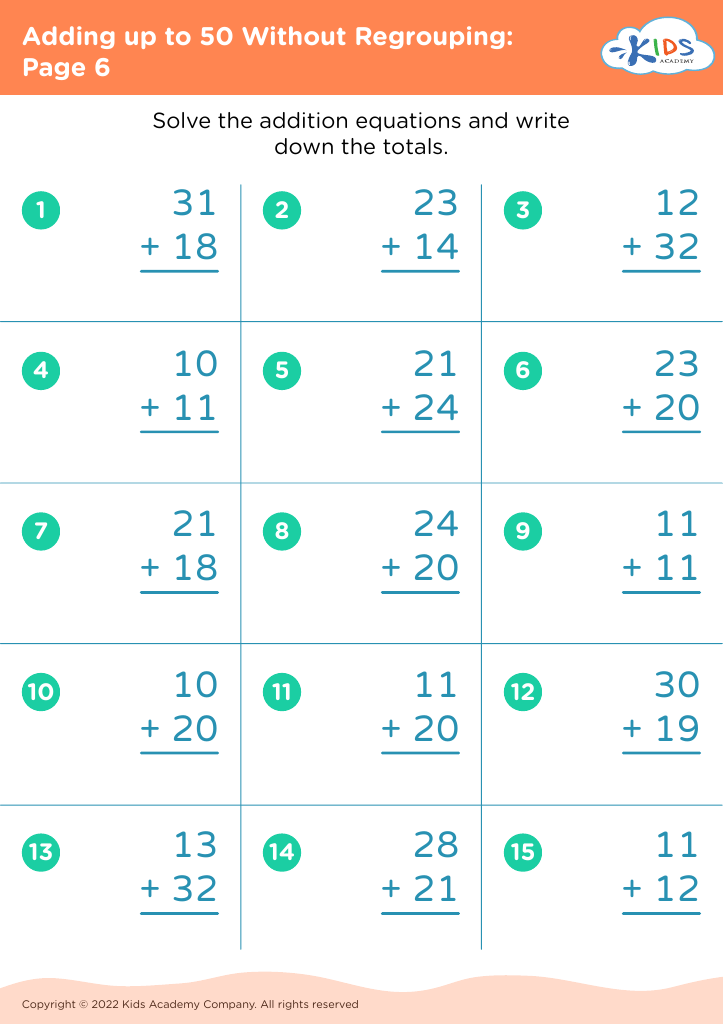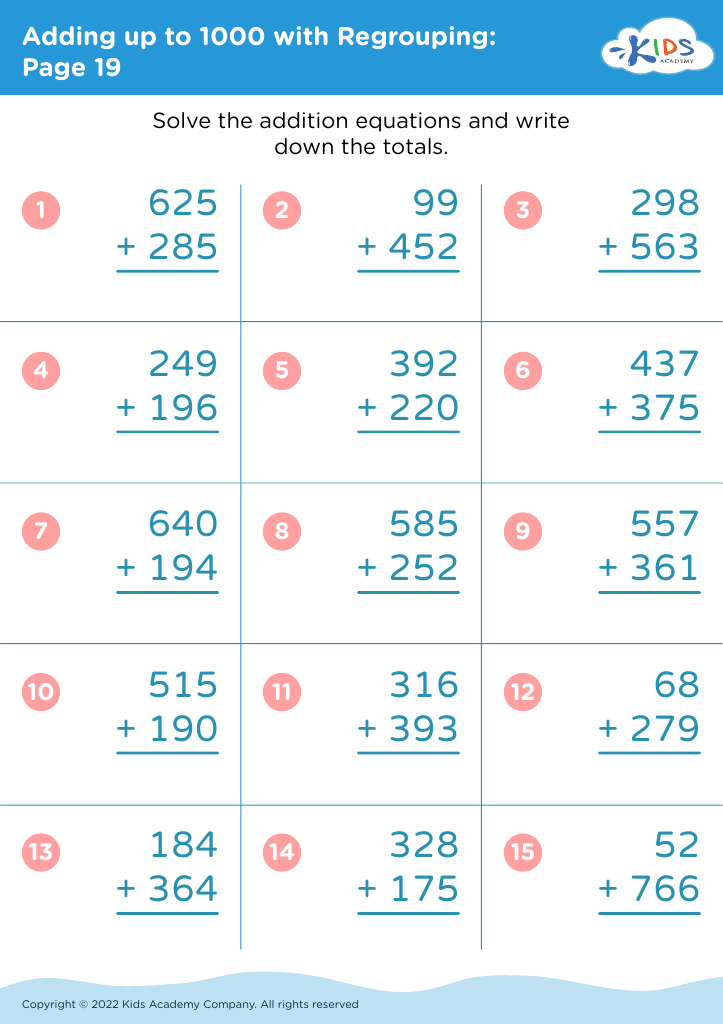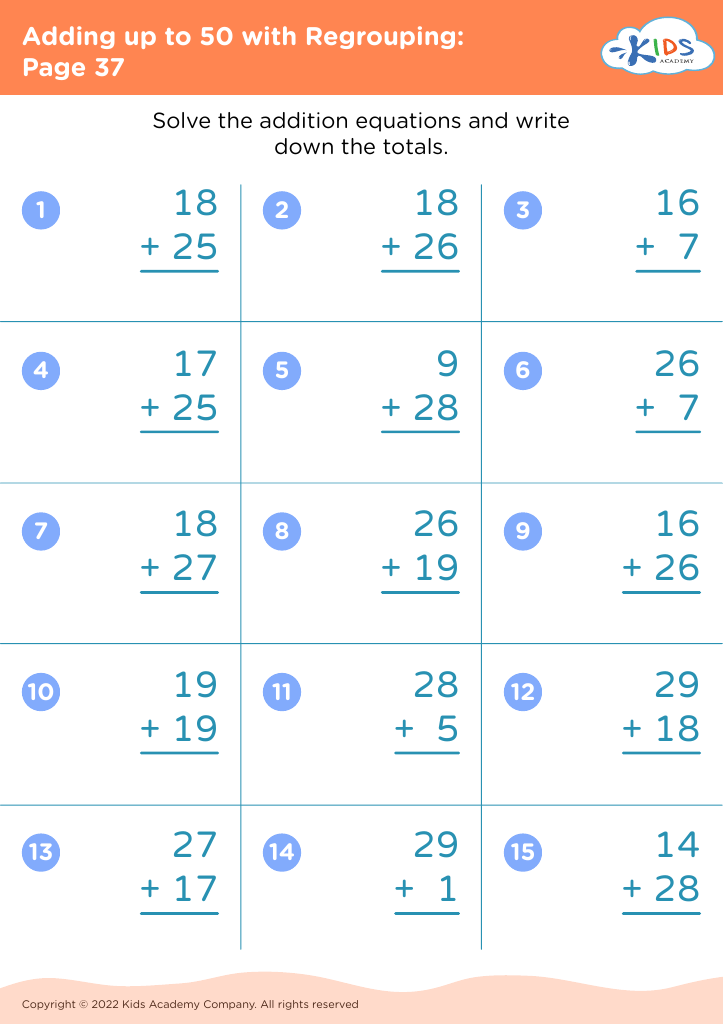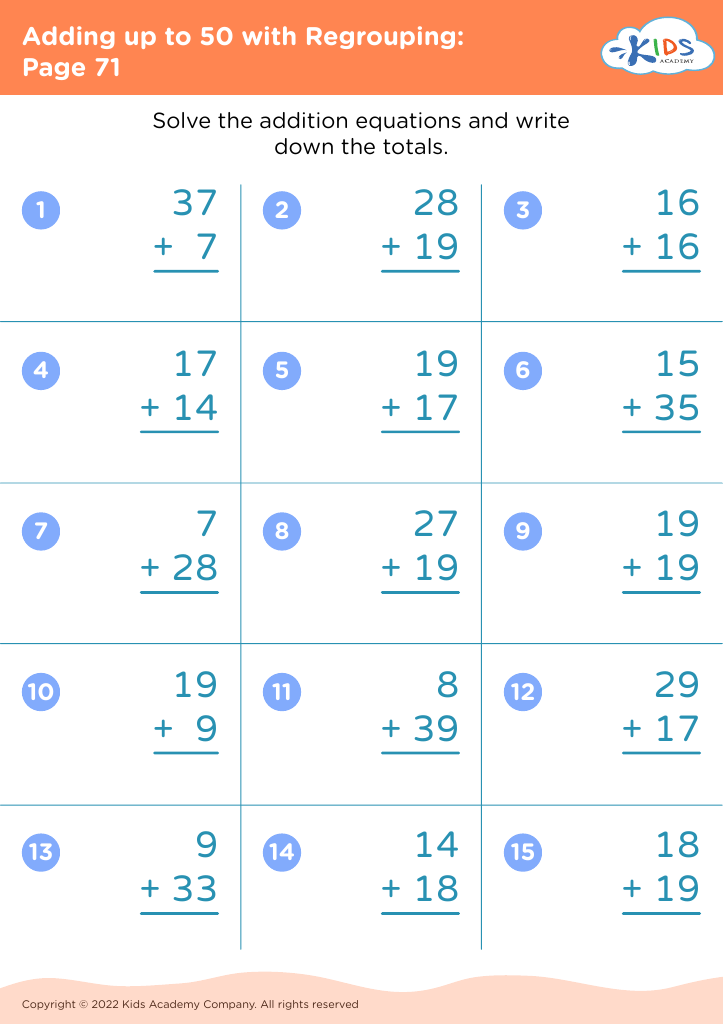Recognizing Patterns Addition Worksheets for Ages 3-8
21 filtered results
-
From - To
Discover our engaging Recognizing Patterns Addition Worksheets designed for children aged 3-8! These fun and interactive resources help young learners develop essential math skills while exploring number patterns and enhancing their addition techniques. Our worksheets promote critical thinking and boost confidence in solving addition problems by identifying trends and similarities within numbers. Perfect for parents and educators, these colorful printables make learning math enjoyable and effective. As kids practice, they'll sharpen their cognitive abilities and foundational math understanding, setting the stage for future academic success. Dive into our collection today and watch your child excel in math through the joy of pattern recognition!
Recognizing patterns in addition is a fundamental skill critical for young learners aged 3-8. This early stage of development lays the groundwork for more complex mathematical concepts and problem-solving abilities later in life.
Understanding patterns helps children make connections between numbers, leading to stronger addition skills. As they identify patterns in counting sequences, grouping, and basic operations, they develop cognitive skills such as critical thinking and logical reasoning. Recognizing patterns also enhances memory retention, making it easier for children to recall addition facts.
Furthermore, pattern recognition fosters confidence in kids, allowing them to approach math challenges with a positive attitude. When children see relationships and regularities in numbers, they are more likely to engage in mathematical reasoning and exploration.
For parents and teachers, nurturing these skills through playful activities and games is vital. By integrating pattern recognition into everyday contexts, educators can make math enjoyable and meaningful, instilling a lifelong love for learning. Ultimately, focusing on recognizing patterns in addition equips children with essential tools for success in mathematics and beyond, creating a strong educational foundation that will benefit them throughout their academic journeys.






































